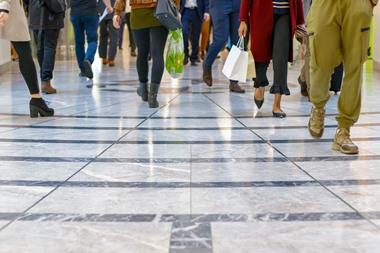
Facebook’s evolution from a solely social platform to a full-scale sales channel for brands has been on the cards for some time now. But with the official release of Instagram shoppable posts and the addition of a native “checkout” functionality, that evolution really has taken a huge leap forward.
Influencers are now holding a new position of power in the purchasing domain, being able to quickly and efficiently impact shopping decisions from discovery to purchase, and without consumers even having to leave the platform. But is the new direct shopper feature relevant enough to work for grocery too, or is it only suitable for obvious industries such as fashion?
Let’s think about it: influencers are far more ‘influential’ when it comes to their followers wanting to purchase the dress they are wearing, or deciding if that particular hair product works for them too. But when it comes to deciding what brand of cheese to buy, or trying out a chocolate NPD, I don’t think it’s quite the same.
What’s more, when we take into consideration that only 7% of grocery shopping takes place online, compared to 25% of fashion purchases, it becomes even harder for food and beverage brands to see this functionality as being beneficial to them.
More from Matt Lee: How Amazon is capturing fmcg shopper marketing spend
In my mind however, one of the biggest differences the new Instagram functionality can have on grocery is putting value back into fmcg. As influencer marketing essentially leverages the connection with the influencer themselves, utilising assets such as their appearance, beliefs, diet or ethos, this puts less pressure on the brands’ products to ‘price drop’ or run a ‘special offer’. There will therefore be more of an opportunity to drive full-price sales of products that currently only get a share in the market by being cheaper than their competitors.
This feature is also an interesting opportunity for brands that have a niche target audience. This is especially true, for example, in brands that specialise in ‘trending’ categories, such as vegan or gluten-free foods. Unlike a TV advert which runs during X Factor or Britain’s Got Talent, with influencers, brands can not only see exactly who their target audience is but can be very confident that they are vegan or interested in becoming vegan if the influencer is too. This association is the most powerful part of the advertising and with an almost ‘one click’ link to purchase, it’s a particularly interesting way to drive engagement for more unusual fmcg products.
In my mind, although Facebook and Instagram have embraced the essence of shopper media by essentially turning their media platforms into something shoppable, the fmcg industry faces many leaps and hurdles before it seamlessly becomes an influencer-led industry. Today, I can’t see the supermarkets worrying too much about it damaging share of trade, as in reality many of us won’t be convinced to buy a new cereal bar or bag of pet food directly from an influencer advert.
However, where it can play an interesting role for fmcg brands is in influencing purchase intent and nudging someone one step closer to buying. If this can then be connected to a well-planned and well-designed campaign in a grocery store or on an e-commerce platform, it could be an interesting new opportunity for fmcg shopper campaigns.



















No comments yet